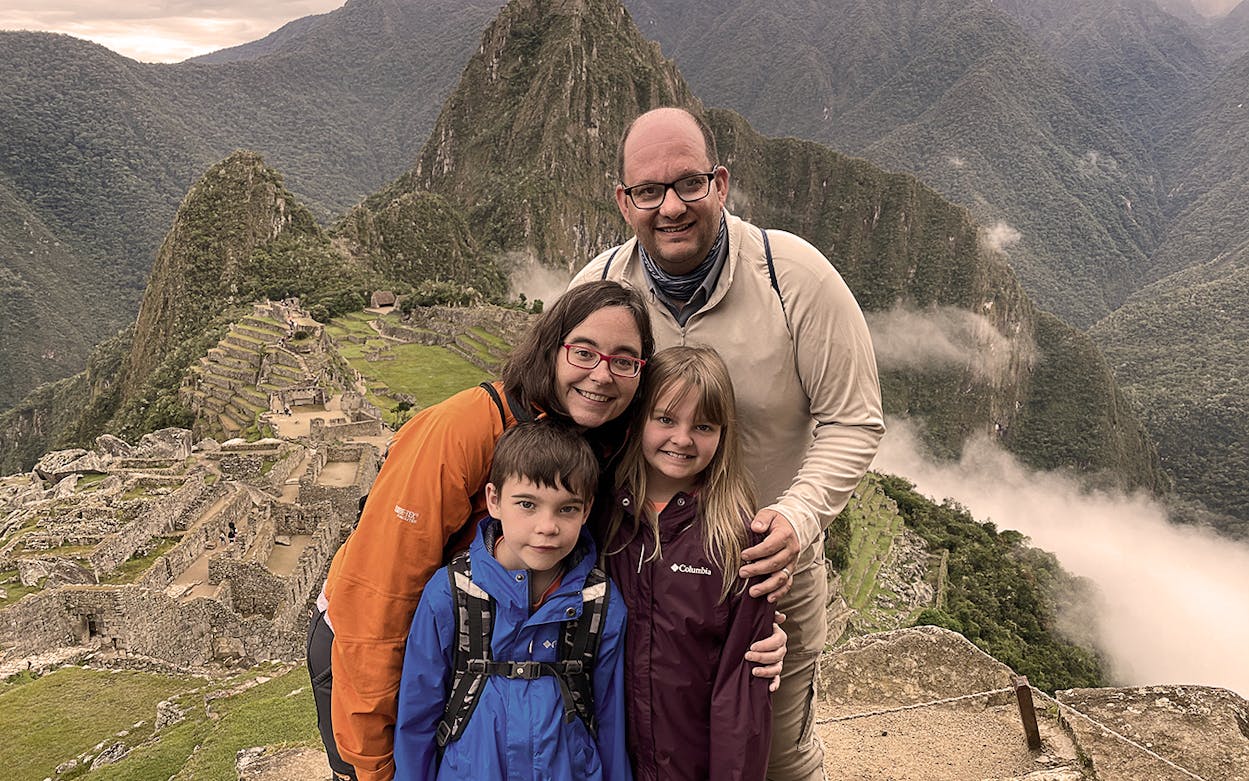Phone Call Number One
The phone rang in our small hotel room in Cusco, Peru, just after dinner on the night of March 15. It was someone from the front desk informing us that Peru’s president, Martín Vizcarra, had ordered the borders closed. We had 27 hours to get out of the country. My wife, Jennifer, and I frantically searched our phones for flights while our two children slept. The prices were jarring, but we needed to get out or face fifteen days of strict quarantine in Peru. I found tickets on American Airlines that wouldn’t bankrupt us, so after hurriedly packing our belongings, we went to sleep knowing we’d be flying to Mexico with eleven hours to spare before the border closed.
This is certainly not the kind of adventure we had imagined last July, when Jennifer purchased discounted tickets to Lima. We excitedly planned our spring break trip, which would include excursions to the Andes and the Amazon. When the coronavirus outbreak worsened as our trip grew near, we were wary but noted, I think correctly, that we probably had a lower possibility of contracting COVID-19 in Peru given the response to the virus in the U.S. So we decided to go, packing a couple weeks’ worth of medication as a precaution. We knew there was a risk of our trip not going smoothly when we left the country on March 12, but we didn’t realize how quickly things would change just three days in.
At 5 a.m., Jennifer woke me up. “Shit! They canceled our flight.” Our flight from Cusco to Lima, Peru’s capital city, was still in good shape, but Lima to Cancún had inexplicably been canceled by LATAM Airlines, which was operating our international flight. We jumped in a cab to the airport as I called American. The airline couldn’t help; it told me to call LATAM. At least we’d be in Lima, which meant a better chance to catch another flight to get us home to Dallas.
There was nothing resembling a line at the Cusco airport. It was just a mass of panicked people pushing in the direction of anyone wearing an airline uniform. We were among the fortunate ones with boarding passes. A LATAM employee escorted us, elbowing her way to the counter to check our bags. Police were stationed at a checkpoint before the security scanners to ensure that only those with legitimate boarding passes were allowed through. Once we sat down at our gate, I called LATAM but couldn’t get through.
On the plane to Lima, flight attendants began drink service like normal, but two rows in they were told by the captain to stop and take their seats. For the next ninety minutes, the flight felt like a collective deep breath that couldn’t be exhaled. The sound of any and every cough in the dry air was magnified by the silence and the nervousness. Once we landed, I called American again, and they offered to return my call in two hours.
Uniformed military stood outside the doors of Jorge Chávez International Airport in Lima. Long guns hung from their shoulders, and tall plastic riot shields, well scuffed from previous use, rested on the ground in front of them. Everyone flying in domestically had to exit the building and return through another door for international travel. Only people who had already purchased a ticket were allowed to enter. Thankfully our canceled boarding passes did the trick.
At least 250 people stood between us and the customer service counter for international tickets. I’ve never been filmed by more people just for waiting in a line, not even the Franklin Barbecue line. I searched for other flights on my phone. Everything to the U.S. and Mexico was sold out. There was one to Chile, but that country had just closed its borders to U.S. citizens. Maybe Costa Rica? I eventually put the phone away hoping to spare the battery, but the pace of the line didn’t spark much hope. If this had been a traffic jam on the interstate, we were past the phase where the pickup trucks with lift kits drive up embankments, and onto the part where cars drive the wrong way up on ramps to escape the wreckage in front of them. “Book a hotel,” I told my wife, “in case we need to stay in Lima.”
We turned the last corner through a maze of stanchions hastily set up by airport personnel and could finally see the end of the line. That’s when a police officer approached the line with a bull horn. He told the crowd, still in the hundreds, to leave the airport. The message was in Spanish, but it needed no translation. Airline employees were abandoning the counter and angry customers were pounding their fists at the front of the line. More police arrived. We rushed to a woman selling taxi rides. The men with guns and shields made their way behind us and the rest of the crowd of stranded travelers. Without any violence, a line of military personnel walked slowly toward the exits and ordered us to leave the building. I didn’t witness anyone who didn’t comply.
Until this moment I could not have described what it felt like to submit to the fact that my family and I would be stranded in another country indefinitely. Maybe I still can’t quite capture it, but it was a surrender. The fight for repatriation was over, at least for the day. The U.S. Embassy in Peru wasn’t answering the phone. We would be at the mercy of the staff of La Paz Apart Hotel, where Jennifer had quickly booked a room, for the remainder of our stay, if they would have us.
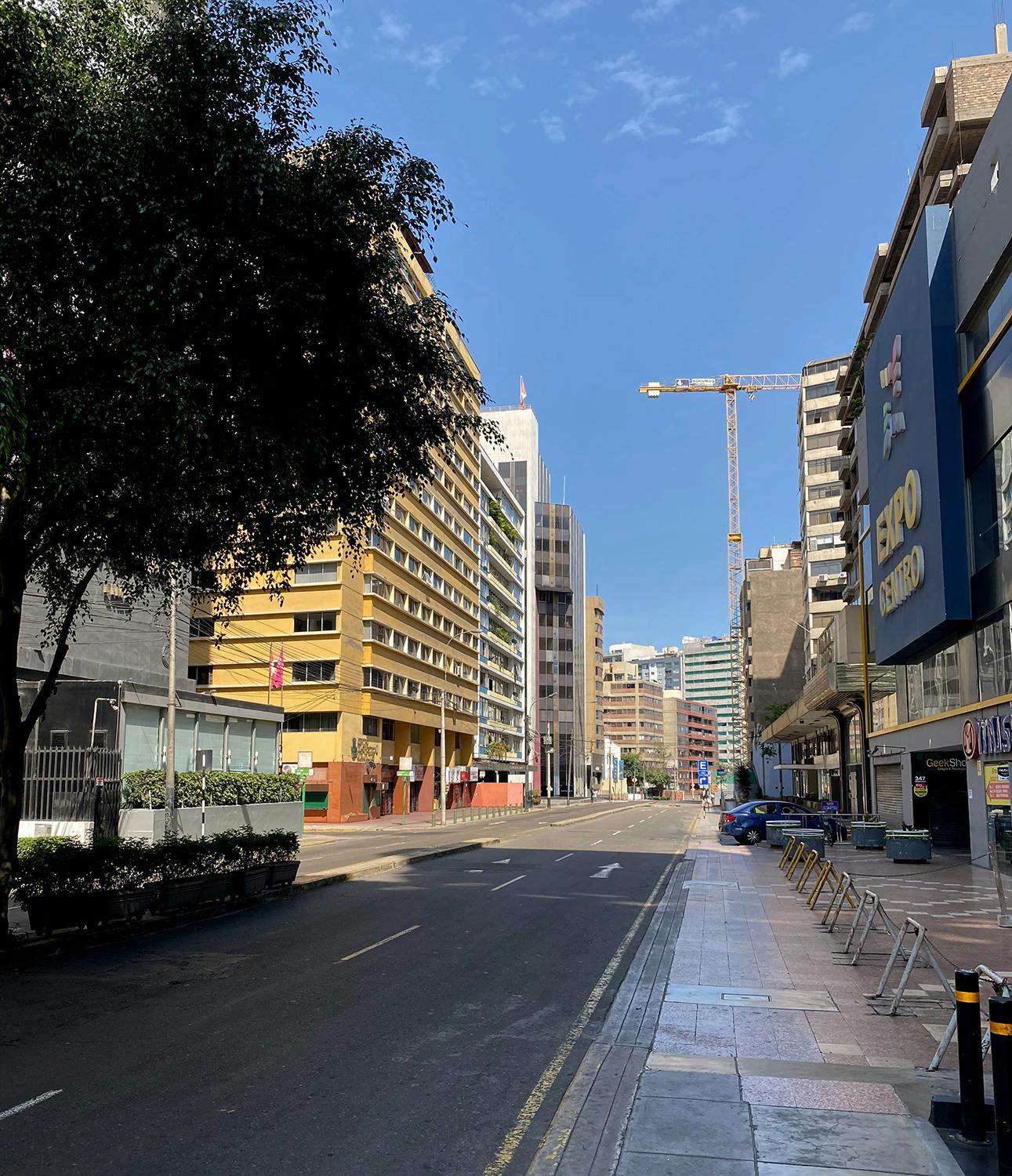
Paola greeted us with a sincere smile at the check-in desk. “We know you don’t want to be here,” she said. I braced myself for a U.S.-style price gouge, but she offered us a suite, with two bedrooms, two bathrooms, and a kitchenette, for $100 per night. A steal for valuable square footage with two young children during a quarantine. We would have plenty of space and time to ponder our immediate future. It had been quite a Monday.
We spent the next few days making the best of it. By the third day of the quarantine, a strict curfew was put into place between 8 p.m. and 5 a.m. Private vehicles were no longer allowed on the street. Our hotel staff was forced to choose among long bicycle rides in the Lima heat, expensive taxis, or risking their health in crowded public buses to get to work. Local TV news reporters drove around hassling dog walkers and asking everyone they encountered why they weren’t inside their home. A video of a woman taking out her trash after the curfew, and immediately being arrested in the street, went viral across Peru. It was the police who were cheered. At eight o’clock every night, as the curfew went into effect, residents whooped and clapped from their balconies or open windows to show their support for the country’s medical workers and for the police keeping them safe.
Back home in Dallas, it seemed like life was almost normal. Dallas County wouldn’t issue a shelter-in-place order until March 23. I’ve seen it described on social media as an overreaction, dramatic, and draconian, but what it does is require people to do what they should have already been doing, which is staying home. Residents can leave their homes “only for Essential Activities, or to provide or perform Essential Governmental Functions, or to operate Essential Businesses,” according to the order. Essential is pretty broadly defined, including driving down the street to pick up lunch at your favorite restaurant, if it’s still open. Governor Greg Abbott has decided to leave it up to local officials in Texas to determine what actions to take.
In Peru, President Vizcarra’s order was far more limiting than the ones being issued in Texas. All businesses besides banks, pharmacies, food markets, and medical facilities were closed. One person per family was allowed outside—no groups—but only to visit a place of business that was still open. Police patrolled the streets, and the military watched over major intersections.
The Peruvian quarantine was announced on March 15, six days after the first positive COVID-19 test in the country. There were 71 cases in the Peru (population 32.2 million) at the time. On the same day back in Texas (population 28.7 million) there were 68 cases. Per the latest numbers at this writing, Peru had 580 cases, and Texas had 1,396 cases.
Phone Call Number Two
Do you remember the internet controversy over Brooklyn barbecue from a couple of years ago? A less-than-ample tray of brisket from New York City became an internet meme after Munchies tweeted out an old article with the headline “Why Is Brooklyn Barbecue Taking Over the World?” Folks on Twitter positively begged me to pile on as they ridiculed the article, but I noticed it was a story from 2014. I instead called the author, Nicholas Gill, to get his side of the story and see what it felt like to be the butt of a meme because of a story he’d probably forgotten about writing.
Gill, an Ohio native, now divides his time between New York and Peru. He writes mainly about South American foodways for the New Worlder website, which he cofounded. When I was planning our trip to Peru, I used a list he coauthored for Eater as the guide for where to eat in Lima. Gill also played a large role in the Chef’s Table episode featuring Peruvian chef Virgilio Martínez, whose restaurant Central is considered one of the best in the world. Jennifer was excited to snag a table there for lunch, months in advance, for one of his famous elevation tasting menus where ingredients from one elevation in Peru are brought together into a dish. The menu takes diners from sea level to the Andes mountains in a single meal.
Now that we were in Lima under quarantine, we knew those restaurant reservations were now worthless, but that was the least of our worries. What would the markets be like? Would they be emptied out like the images I’d seen from Dallas where toilet paper aisles were plundered at the same rate as flat-screen televisions on Black Friday? I sent Gill a message letting him know my family’s situation and alerting him that I may ask for help soon. We don’t really know each other, but he was happy to oblige, and even created a guide for new Lima shoppers under quarantine, like us, that proved quite useful.
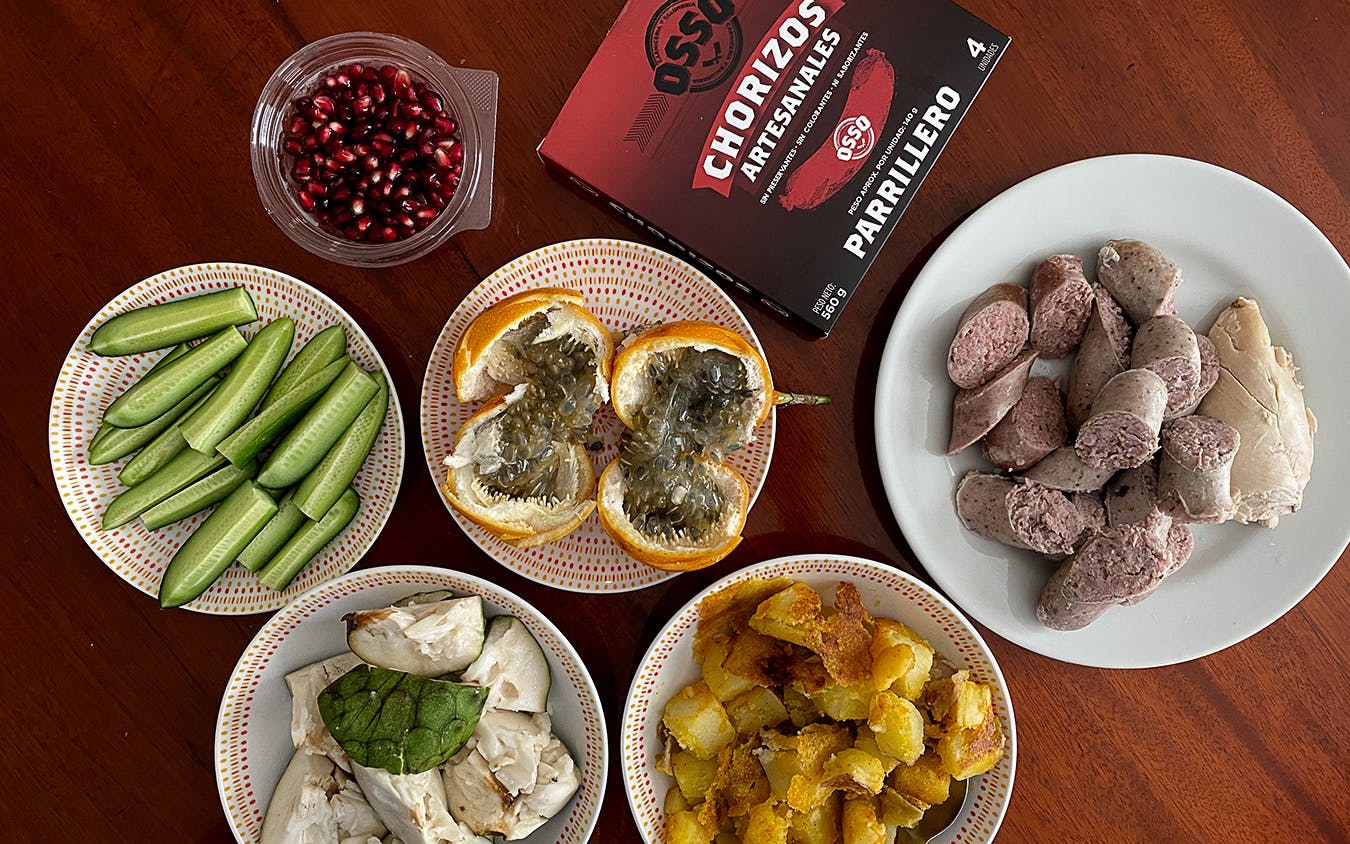
For a few days, trips to the market in Lima were our field trips, although we had to go separately. The stores were well-stocked, and I spotted no hoarding crowds. Jennifer would go early for a few items, and I would go later to gather what we needed for the next couple of meals. To get our minds off our predicament, we feasted on the gloriously sweet passionfruit variety called granadilla and a white-fleshed fruit that tasted like a cross between bananas and pineapple called cherimoya. Rotisserie chickens, a.k.a. pollo a la brasa, were a daily purchase. I held one in a domed plastic container without a bag on the way back to the hotel, and a police officer stopped me on the street. “Cuantos?” he asked. He wanted to know how much I’d paid for such a beautiful chicken.
Behind the scenes, Gill had been asking the local chefs he knew if they could help us. “I just wanted them to get you some food,” Gill would later tell me, but that was impossible. Chefs weren’t even allowed inside their own restaurants. A few days into our forced quarantine, one chef offered a far greater gift than food.
Phone Call Number Three
“I think you will be on the flight,” were the reassuring words to me from Virgilio Martínez. It was March 20, and we had been quarantined for five days. I had never met or talked to the famous chef, but he had called me at my hotel with good news. Martinez and his mother-in-law had been working to find a way out of Peru for us. “I am bored,” he said, which wasn’t surprising since his restaurant empire has been shut down. He was sitting at home like most every other Peruvian. I thanked him profusely, in English and Spanish. “I just want to help people,” he said. I was stunned. It was the day after we were supposed to have eaten at Central. Weeks before I had wished only that he might be able to visit our table to explain a dish or two. Now he was offering a way home.
The moment of real faith came with his next text message. It was a link to what was basically a PayPal account for a local tour company. Send them a few thousand dollars, and all four of our names would be on the flight manifest that would fly from Lima to Miami the next day. I sent the money. Several hours later, Martínez sent proof that we were on the flight and a letter from the consulate, written in Spanish, that gave us permission to board the flight. “Be at the airport four hours before your flight,” he said. It was scheduled for 10 a.m. the next day.
At this point, given the ban on private vehicles, taxis were harder to come by than cheap brisket in Austin. Our hotel found a guy, Julio, who loaded our large bags into his tiny trunk at 5:30 in the morning. We had driven from the airport to the hotel quite quickly a few days earlier along the highway that hugged the coast of the Pacific Ocean on the western edge of Peru. Julio’s route to the airport was much less direct. I wondered what was happening, but kept my mouth shut. Then I realized he was avoiding the police checkpoints.
“This is not taxi,” Julio told me in broken English. “I am your friend,” he said, waiting for me to nod. Just south of the airport we couldn’t avoid the police. He handed over his ID card. They waved him through. “Whew,” he said, and wiped his brow. “Tranquilo gato,” I said, calling him a cool cat, which gave him a laugh.
Large steel gates closed off all access to the airport grounds. We couldn’t drive up to the building. Julio shrugged his shoulders and gave me an uncertain look. A hundred meters later we saw a group of about fifty people, many with large roller bags, standing outside a gate. “Is this the Miami flight?“ I asked toward the crowd, and several people nodded. We tipped Julio, and he wished us good luck.
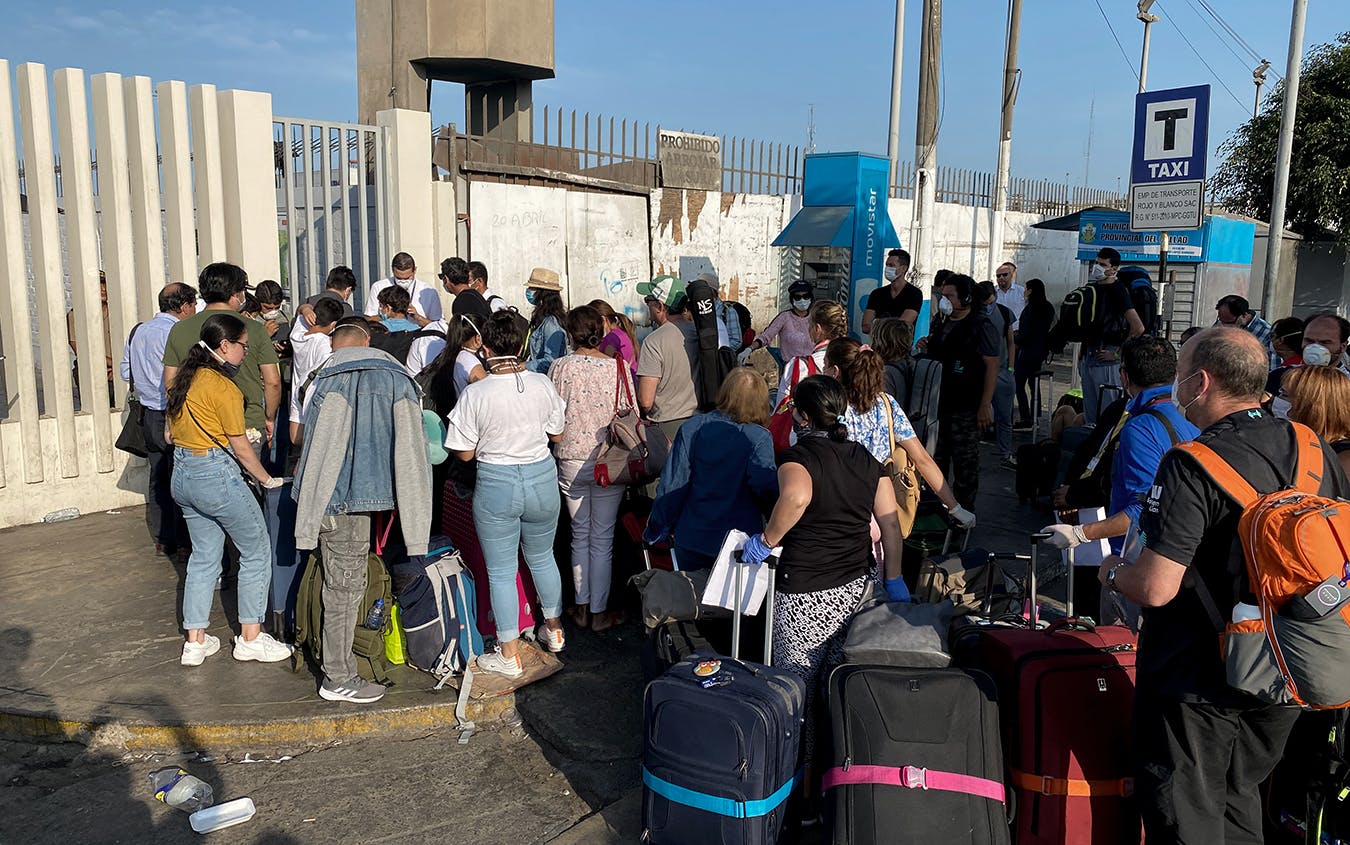
We stood for more than an hour as the line grew behind us. The only communication from the security guard on the other side of the gate was to tell us to move back when an airport employee needed to come in or out. At 7:40 a.m., a LATAM employee walked through the gate and demanded a single-file line. Several police joined him, but rather than organizing the line they took selfies with the huge crowd that had formed. Passengers who had been sitting on idling tour buses next to the line began to file out and joined the not-at-all-single-file line. People started yelling at each other. There was pushing. Everyone was wearing masks, which seemed to give some people permission to display an unapologetic level of boorishness. A cacophonous mother pushed her way to the front of the line as her children and husband followed. He knocked my daughter to the ground with his wide load of a roller bag. (I chalked him up as a Floridian, but sadly saw him again waiting for bags at DFW Airport.) It didn’t get them home any faster.
It was an odd feeling walking into a mostly empty airport mid-morning. The only people were the 175 of us flying to the U.S. and a couple dozen LATAM employees who were thankfully there to get us back home. They served a small meal on the plane. My son doesn’t do well with wheat or milk, but he downed the crunchy milk chocolate dessert before we noticed. An hour later he ran to the bathroom, which was locked. He vomited on the floor. I imagined the flight attendants reporting it to the medical staff that would surely meet us on the ground in Miami. When we first landed in Peru, doctors in scrubs and masks checked the temperature of every passenger as we got off the airplane. Surely it would be more stringent in the U.S.
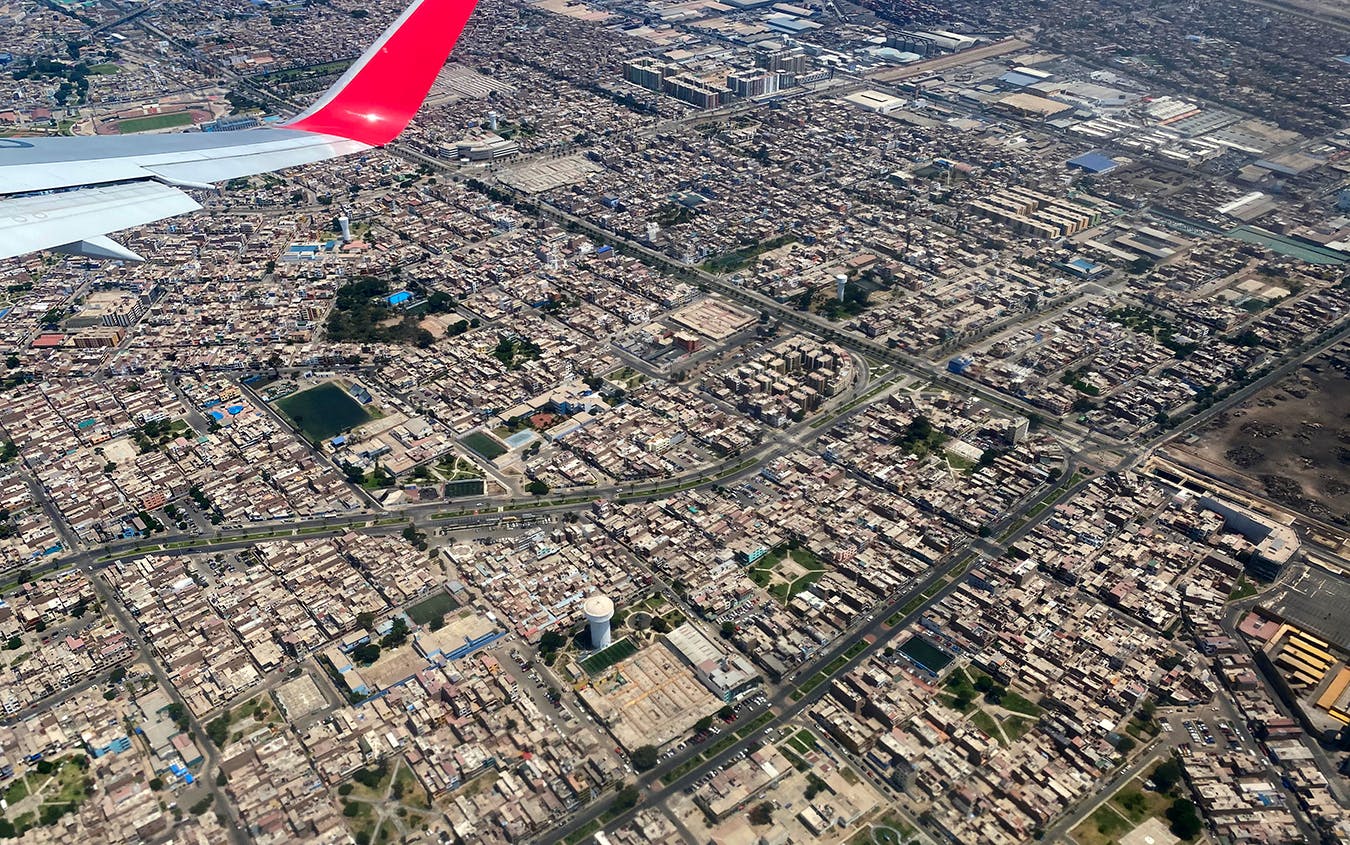
There wasn’t a medical professional to be found at the airport in Miami. There was no medical questionnaire, no temperature-taking, not even so much as a question about symptoms from the passport control folks. If you’re comforted by the idea that all incoming international passengers go through some rigorous health screening when they enter the U.S., that was not our experience.
We made it to Texas later that same night. It took me three days to finally get a bite of Texas barbecue. We weren’t placed under any mandatory medical quarantine, but we’re trying to stay in the house as much as possible. We only go out to visit the market or the pharmacy, and we’re cooking our own meals at home. I guess you could say the Peruvian quarantine may have rubbed off on us.
After settling in in Dallas, I texted Martínez and Gill again to thank them. They both sent their well wishes. Gill responded back that he was happy to help. “Now you have to go save Texas BBQ,” he wrote.
“Or else Brooklyn BBQ will take over the world!,” I joked.
Gill signed off with, “I tried to warn everyone!”


